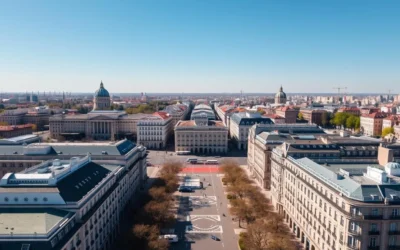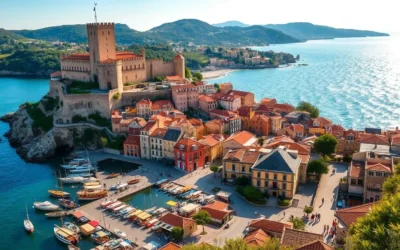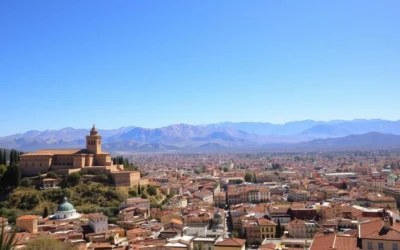✓ Accommodations✓ Flights✓ Rental Cars✓ Tours & Activities
Spain’s linguistic landscape is as diverse as its culture. The official language is Castilian Spanish, spoken by nearly 99% of the population as a first or second language. This language serves as a unifying force across the country, deeply rooted in its history and identity.
Beyond Spanish, regional languages like Catalan, Galician, and Basque hold co-official status in their respective areas. For example, Catalan is spoken by around 9 million people in Catalonia, Valencia, and the Balearic Islands. These languages reflect the rich heritage of the regions they represent.
Understanding the role of language in Spain helps you appreciate its cultural depth. From the majority use of Spanish to the preservation of regional dialects, language is a key part of the country’s identity. Dive in to explore how these linguistic roots shape Spain’s history and unity.
Spain: Official and widely spoken languages – A Comprehensive Guide
The linguistic framework of Spain is a fascinating blend of unity and regional diversity. While Castilian Spanish serves as the official language nationwide, several co-official languages thrive in specific regions. This balance reflects the country’s rich cultural heritage and commitment to preserving local identities.
In regions like Catalonia, Galicia, and the Basque Country, co-official languages such as Catalan, Galician, and Basque are integral to daily life. These languages are not just tools of communication but symbols of regional pride. For instance, Catalan is spoken by over 9 million people, deeply rooted in Catalonia’s history and culture.

Spain’s bilingual and multilingual framework ensures that both the official language and regional dialects coexist harmoniously. This approach fosters a sense of belonging within each community while maintaining national unity. Surveys show that over 99% of the population uses Spanish, either as a first or second language.
Today, the use of these languages extends beyond casual conversations. They are present in education, media, and official documentation. This integration highlights the importance of linguistic diversity in shaping Spain’s modern identity. Understanding this framework provides insight into how language bridges the gap between tradition and progress.
As you explore Spain’s linguistic landscape, you’ll notice how each region contributes to the country’s vibrant cultural tapestry. This guide sets the stage for a deeper dive into the unique characteristics of each language in the sections to come.
Unpacking the Four Official Languages of Spain
The linguistic tapestry of Spain is woven with threads of history, culture, and regional pride. Four official languages are recognized, each with its own unique story and significance. These languages are not just tools for communication but also symbols of identity and heritage.
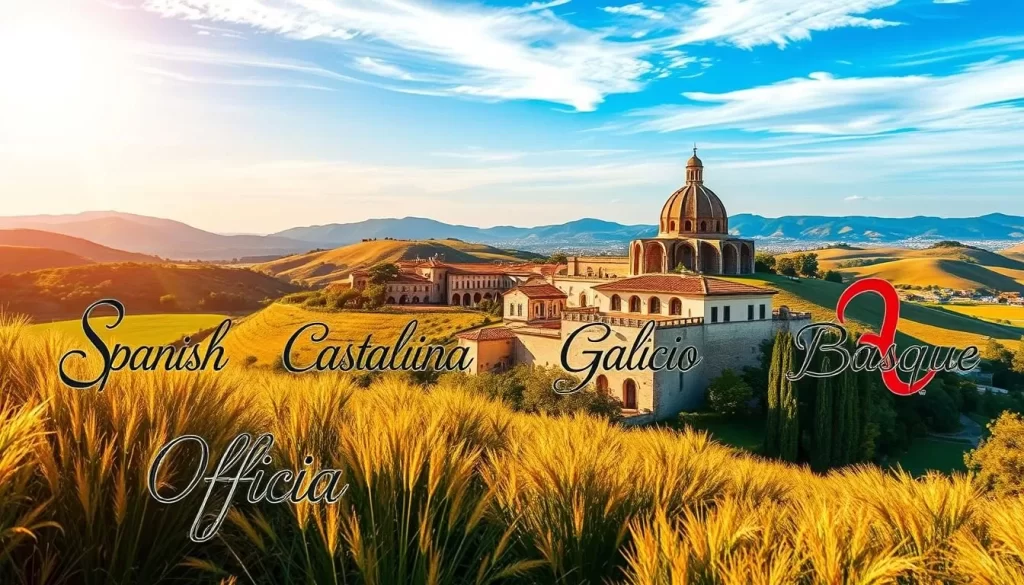
Castilian Spanish – The Nation’s Lingua Franca
Castilian Spanish, often simply called Spanish, is the most widely spoken language in the country. Its roots trace back to the 9th century, evolving from Latin as part of the Romance language family. Today, it serves as the unifying force for communication across all regions.
Over the centuries, this language has absorbed influences from various cultures, enriching its vocabulary and expressions. It’s not just a means of daily interaction but also a vital part of Spain’s cultural and historical identity.
Catalan, Galician, and Basque – Regional Voices with Unique Heritage
Catalan, Galician, and Basque are also spoken in their respective regions, each with a rich history. Catalan, for example, is spoken by around 17% of the population, primarily in Catalonia, Valencia, and the Balearic Islands. It’s a Romance language with deep cultural roots.
Galician, spoken by about 7% of the population, is closely related to Portuguese and is a key part of Galicia’s identity. Basque, on the other hand, is unique as it’s not a Romance language but an isolate, with no known linguistic relatives. It’s spoken by approximately 2% of the population, mainly in the Basque Country and parts of Navarre.
These languages reflect the dialect diversity of Spain, each contributing to the country’s vibrant cultural mosaic. They are not just relics of the past but living elements of modern society, used in education, media, and daily life.
Exploring Regional and Minority Languages in Spain
Beyond the well-known languages, Spain’s regional dialects offer a fascinating glimpse into its cultural diversity. These varieties are not just linguistic curiosities but vital markers of identity for their speakers. They reflect the unique cultural heritage of each autonomous community.
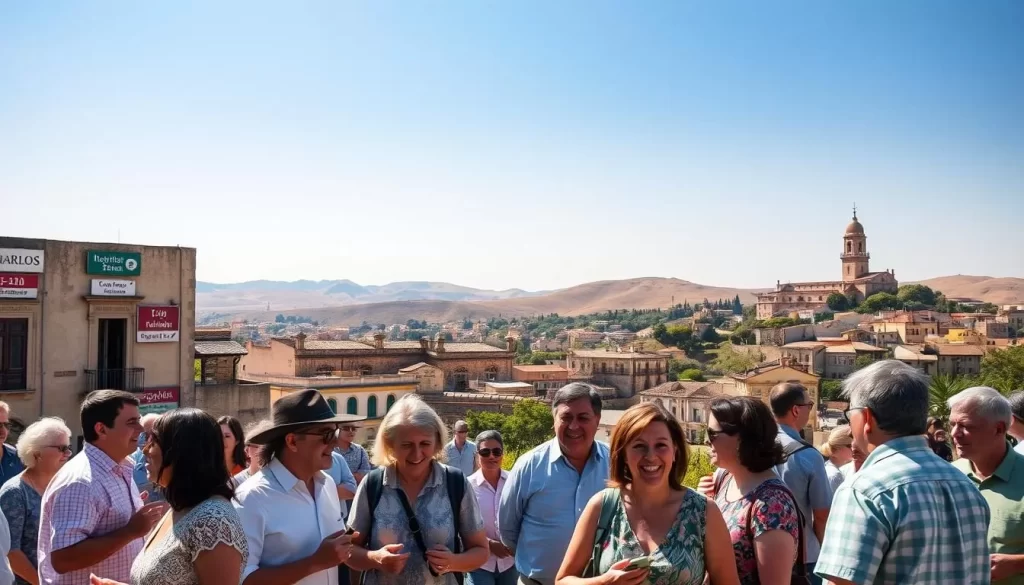
Aranese and the Occitan Legacy in the Pyrenees
Aranese, a dialect of Occitan, is spoken in the Val d’Aran region of the Pyrenees. With only around 7,000 speakers, it holds co-official status in Catalonia, ensuring its preservation. This language connects the region to its Occitan roots, which span across southern France and parts of the balearic islands.
Legal protections have helped Aranese thrive in education and local media. It’s a testament to how smaller languages can maintain their relevance in a globalized world.
Asturian-Leonese, Aragonese, and Extremaduran Dialects
Asturian-Leonese, Aragonese, and Extremaduran are other regional dialects with deep historical roots. Asturian-Leonese, spoken by about 100,000 people, is recognized but not co-official in Asturias. Aragonese, with around 10,000 speakers, faces similar challenges in Aragon.
Extremaduran, spoken in Extremadura, lacks official recognition but remains a vital part of local identity. These dialects highlight the linguistic variety within Spain’s autonomous communities.
| Language | Region | Speakers | Legal Status |
|---|---|---|---|
| Aranese | Val d’Aran | 7,000 | Co-official |
| Asturian-Leonese | Asturias | 100,000 | Recognized |
| Aragonese | Aragon | 10,000 | Recognized |
| Extremaduran | Extremadura | Unknown | Unrecognized |
These languages are more than just communication tools. They are symbols of regional pride and cultural heritage. By preserving them, Spain ensures that its linguistic tapestry remains vibrant and diverse. For more on Spain’s linguistic diversity, check out this comprehensive guide.
Foreign Language Influence and Modern Communication
Spain’s linguistic diversity continues to evolve with global influences. Immigration and globalization have introduced foreign languages like English and Arabic into everyday communication. These languages are now part of the country’s vibrant linguistic mix, reflecting its multicultural identity.
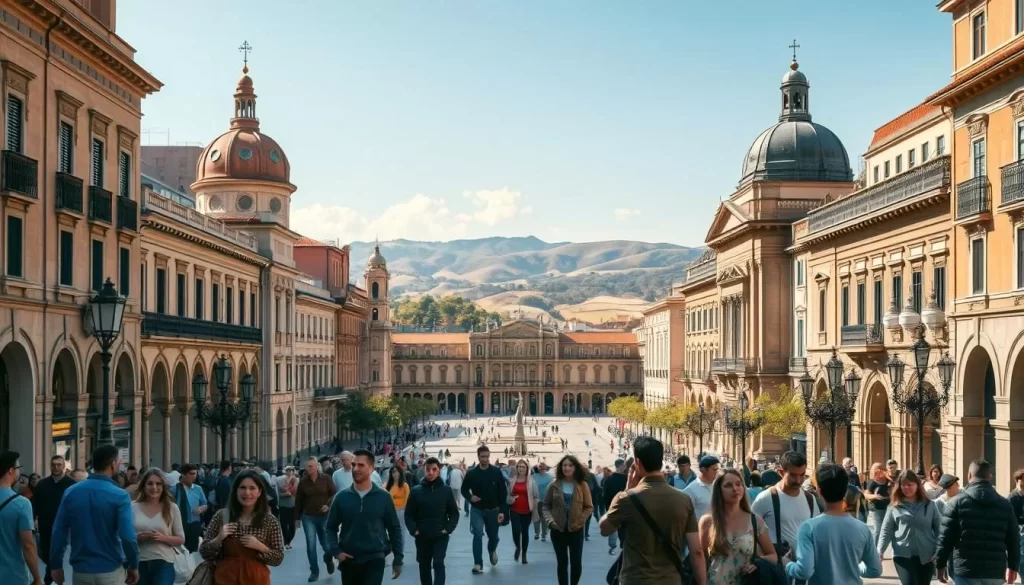
The Impact of English, Arabic, and Immigrant Languages
English has become a key language in Spain, especially in education and business. Over 25 million people in the U.S. speak Spanish, and this trend is mirrored in Spain with the growing use of English. Arabic, spoken by immigrant communities, also plays a significant role in regions with large populations from North Africa.
Other immigrant languages, such as Romanian and Chinese, are increasingly heard in urban areas. These languages enrich Spain’s cultural tapestry and highlight the importance of linguistic diversity. Schools are adapting by offering multilingual programs to support integration.
Digital Media and the Preservation of Linguistic Diversity
Digital media platforms are playing a crucial role in preserving and promoting linguistic diversity. Social media, podcasts, and online content allow people to share their native languages with a global audience. This effort helps maintain cultural heritage while fostering understanding among different groups.
Initiatives in education are also supporting this trend. Many schools now include digital literacy programs that encourage students to create content in multiple languages. This approach not only enhances language skills but also prepares students for a globalized world.
| Language | Region | Influence |
|---|---|---|
| English | Urban Areas | Education, Business |
| Arabic | Southern Spain | Immigrant Communities |
| Romanian | Major Cities | Immigrant Population |
| Chinese | Urban Centers | Trade, Commerce |
These modern influences are shaping Spain’s linguistic landscape in exciting ways. By embracing foreign languages and digital media, the country is ensuring its linguistic diversity remains vibrant. For more on the history of Spanish and its global impact, explore this comprehensive guide.
Conclusion
The interplay of languages in Spain reflects its rich cultural mosaic. From Castile León to the Val d’Aran, each area contributes to this vibrant tapestry. Legal frameworks like statute autonomy ensure regional dialects thrive alongside the dominant tongue.
Efforts by millions of persons preserve this heritage, bridging tradition and modernity. Education and media play pivotal roles in maintaining linguistic diversity across borders. This balance highlights the status of each language as a symbol of identity.
Understanding these dynamics offers insight into Spain’s cultural richness. Explore more about this linguistic diversity and its impact on society. Spain’s language policies continue to shape its multicultural identity, ensuring every voice is heard.
The above is subject to change.
Check back often to TRAVEL.COM for the latest travel tips and deals.


